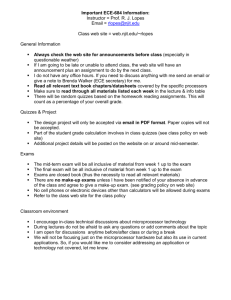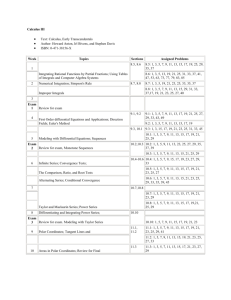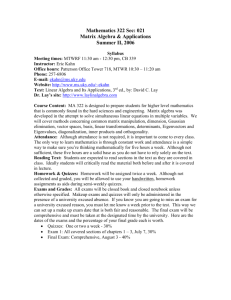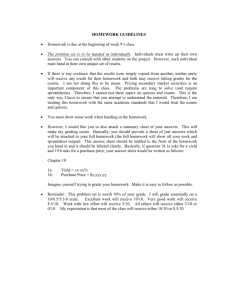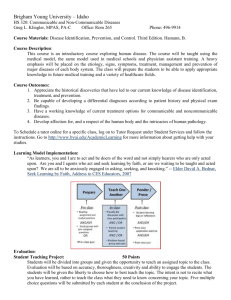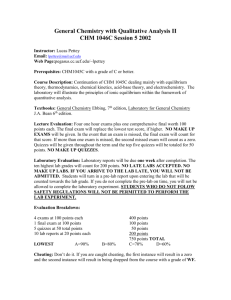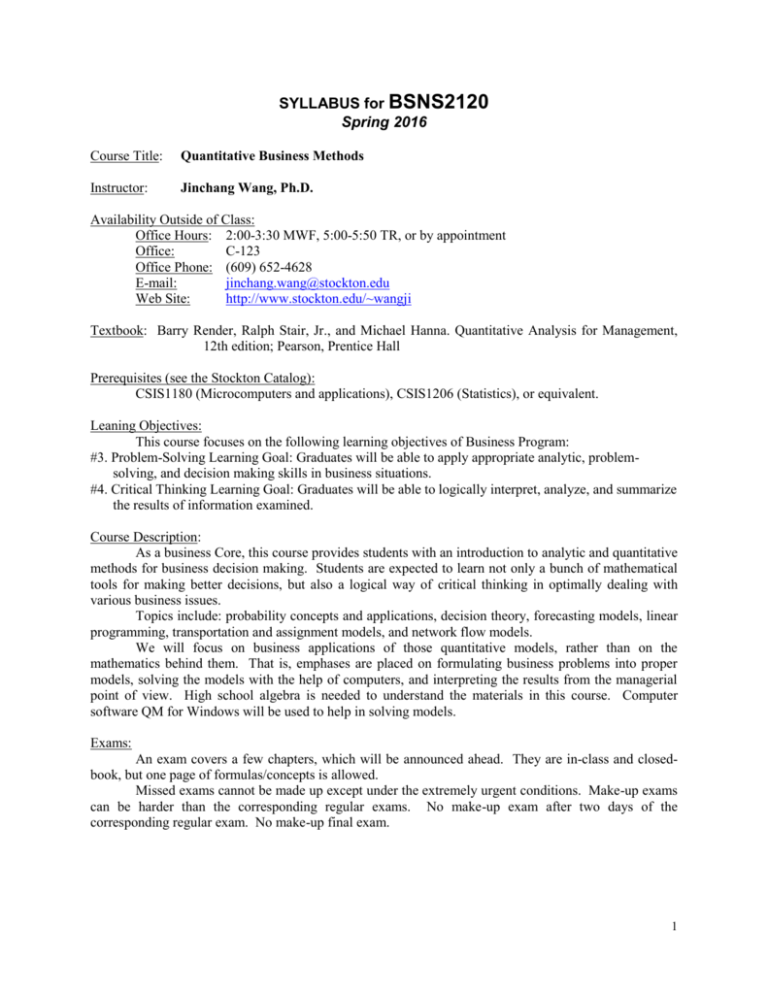
SYLLABUS for BSNS2120
Spring 2016
Course Title:
Quantitative Business Methods
Instructor:
Jinchang Wang, Ph.D.
Availability Outside of Class:
Office Hours: 2:00-3:30 MWF, 5:00-5:50 TR, or by appointment
Office:
C-123
Office Phone: (609) 652-4628
E-mail:
jinchang.wang@stockton.edu
Web Site:
http://www.stockton.edu/~wangji
Textbook: Barry Render, Ralph Stair, Jr., and Michael Hanna. Quantitative Analysis for Management,
12th edition; Pearson, Prentice Hall
Prerequisites (see the Stockton Catalog):
CSIS1180 (Microcomputers and applications), CSIS1206 (Statistics), or equivalent.
Leaning Objectives:
This course focuses on the following learning objectives of Business Program:
#3. Problem-Solving Learning Goal: Graduates will be able to apply appropriate analytic, problemsolving, and decision making skills in business situations.
#4. Critical Thinking Learning Goal: Graduates will be able to logically interpret, analyze, and summarize
the results of information examined.
Course Description:
As a business Core, this course provides students with an introduction to analytic and quantitative
methods for business decision making. Students are expected to learn not only a bunch of mathematical
tools for making better decisions, but also a logical way of critical thinking in optimally dealing with
various business issues.
Topics include: probability concepts and applications, decision theory, forecasting models, linear
programming, transportation and assignment models, and network flow models.
We will focus on business applications of those quantitative models, rather than on the
mathematics behind them. That is, emphases are placed on formulating business problems into proper
models, solving the models with the help of computers, and interpreting the results from the managerial
point of view. High school algebra is needed to understand the materials in this course. Computer
software QM for Windows will be used to help in solving models.
Exams:
An exam covers a few chapters, which will be announced ahead. They are in-class and closedbook, but one page of formulas/concepts is allowed.
Missed exams cannot be made up except under the extremely urgent conditions. Make-up exams
can be harder than the corresponding regular exams. No make-up exam after two days of the
corresponding regular exam. No make-up final exam.
1
Quizzes:
Quizzes are in-class, closed-book and closed-notes, and may not be announced ahead.
Missed quizzes cannot be made up. Two quizzes of the lowest scores will be dropped toward the
final grade.
Late Homework and Class Exercise:
Homework should be turned in on or before the due dates. For late homework: 50% deduction if
one day late; no credit if two or more days late.
A class exercise may be collected for credit. Late exercises are not credited.
Attendance:
Attendance will be taken in class, and counted into the final grade. No excuse-document is
needed for a missed class. The first two missed classes are not counted.
Grading:
Exams / Quizzes
Homework / Class work
Attendance
65%
25%
10%
Each student's cumulative score is calculated on a 100-point base at the end of the semester. The
cumulative score is calculated as follows:
65 * (your total exam and quiz score / possible total exam and quiz score)
+
25 * (your total homework and class work score / possible total homework and class work score)
+
10 * (your attendance / (total number of class meetings – 2))
----------------------------------------------------------------------------------------------=
Your cumulative score out of 100.
The grades are given according to the cumulative scores as follows:
cumulative score
Grade
>=94
A
<94 and >=90
A
<90 and >=87
B+
<87 and >=82
B
<82 and >=80
B
<80 and >=75
C+
<75 and >=70
C
<70 and >=67
C
<67 and >=65
D+
<65 and >=60
D
<60 and >=58
D
<58
F
Academic Honesty:
Students are required to do their work independently in exams and quizzes. Any forms of
cheating will not be tolerated.
Handicapped Students:
Any student who has a disability that prevents the fullest expression of abilities should contact me
personally as soon as possible so that we can discuss class requirements.
2

